Epsom salts, naturally occurring mineral compounds of magnesium and sulfate, have become popular among gardeners due to their astonishing benefits. Consequently, this article seeks to show how Epsom salt can be used effectively to enhance tomato plants’ and houseplants’ growth and health. By understanding its distinctive characteristics and uses, individuals will comprehend how this simple component could increase nutrient intake, boost plant life, and even prevent some diseases. Whether tending to a vivid vegetable garden or keeping indoor greens alive, this paper will give practical ideas and insights on using Epson salt in gardening.
What is Epsom Salt, and How Does it Benefit Plants?
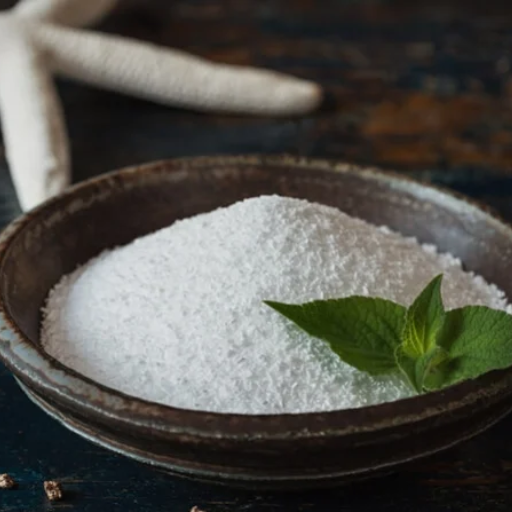
Epsom Salt: What Is It?
Epsom salt is a mineral compound of magnesium sulfate, usually in the form of crystals. It was named after a bitter saline spring in Epsom, England, where it was first identified. In gardening, Epsom salts are valued because they provide essential nutrients, particularly magnesium, which plays a vital role in photosynthesis and increased nutrient uptake by plants. As such, gardeners use it as an amendment to boost plant growth and flowering and increase resistance to plant stressors.
Why are Epsom salts beneficial for plants?
The main advantage of epsom salts to plants results from their high content of magnesium, which is vital for various physiological processes. Below are the key benefits of their justifications:
- Improving Photosynthesis: Magnesium is a vital constituent of chlorophyll, the pigment responsible for trapping sunlight energy. Improved availability of magnesium leads to advanced photosynthesis, thus fueling plant growth. Scientific studies have shown that a magnesium deficiency could result in a 50% diminished production of chlorophyll.
- Better Nutrient Uptake: Magnesium improves plants’ nitrogen and phosphorous absorption by enhancing their magnesium intake. This ensures a sufficient supply of nutrients for growth and development, thereby increasing yields, especially in tomato crops. Applying Epsom salt has resulted in yield increases of up to 20%.
- Promoting Flowering and Seed Production: Due to its role in auxin hormone production, tomatoes, as well as some indoor houseplants, can benefit from using Epsom salt, which can lead to improved flowering. The research demonstrates that blossom production can be improved significantly by using 1 tsp per gallon of water (Clarkson).
- Strengthening Plant Cell Walls: Plants fortified with magnesium can tolerate difficult conditions such as droughts and diseases due to enhanced structural integrity within cell walls. More robust defense mechanisms may improve overall plant health and lifespan.
- Reduced Plant Stress: Epson salt’s sulfates are an essential component of amino acids and proteins that help plants deal with various stressors like transplants or pest attacks. Magnesium sulfate, for instance, reduces transplant shock in many plant species (Quarles).
In conclusion, incorporating Epsom salt into your gardening routine will result in healthier, more robust plants with improved growth and resilience, making it a great addition to tomatoes and houseplants.
Why Do Plants Require Magnesium and Sulfur?
There are several reasons why plants need magnesium and sulfur. As a gardener, I have learned that Chlorophyll is synthesized by magnesium, which is essential for plants’ photosynthesis. Without enough magnesium, leaves can turn yellow (chlorosis), and other parts of the plant can grow stunted. Conversely, sulfur is vital for synthesizing amino acids and proteins to promote growth and development and the general state of health in plants. Besides this increased flavor, sulfur also helps improve the nutritional value of crops. In tandem, these two elements provide favorable conditions for robust crop development, allowing them to withstand diseases while producing high yields.
How Much Epsom Salt Should You Use for Different Plants?

How Much Epsom Salt Per Gallon of Water?
In my experience, the recommended amount of Epsom salt to use is generally about 1 to 2 tablespoons per gallon of water. This concentration seems to strike a good balance for promoting healthy plant growth without risking over-fertilization. I often start with one tablespoon and monitor their response before increasing the dosage if needed, especially in delicate plants or seedlings. It’s also a good idea to apply this solution about once a month during the growing season for optimal results.
Specific Epsom Salt Ratios for Tomato Plants
When applying Epsom salt to tomato plants, I’ve found that a ratio of 1 tablespoon of Epsom salt per gallon of water works well for promoting healthy growth. It’s particularly effective when applied during the flowering stage, so I make it a point to start using this solution when I see the first blooms. I often increase the application for established tomato plants every couple of weeks, ensuring that I mix 1-2 tablespoons of Epsom salt per gallon of water. This practice not only boosts magnesium levels for better fruit development but also helps enhance the overall yield and flavor of the tomatoes.
Using Epsom Salt for Houseplants
In my research on using Epsom salt for houseplants, I’ve found that a standard recommendation across various reputable sources is to use about one tablespoon of Epsom salt per gallon of water when watering indoor plants. This ratio promotes healthy growth by providing the essential magnesium and sulfur many houseplants need. It’s advised to apply this solution every four to six weeks during the growing season.
For specific houseplants such as succulents and cacti, I tend to dilute my use of Epsom salt further by using as little as one teaspoon per gallon because more than that can lead to too much fertilizer, excessive nutrients being supplied, and hence harmful to them. For flowering houseplants like African violets, applying Epsom salt every month can enhance blooming, especially if mixed in the same proportion of 1 tablespoon per gallon. These proportions ensure that the plants receive adequate nutrition while minimizing the risk of nutrient burn, thus promoting robust and vibrant growth.
How to Apply Epsom Salt to Your Garden Plants?
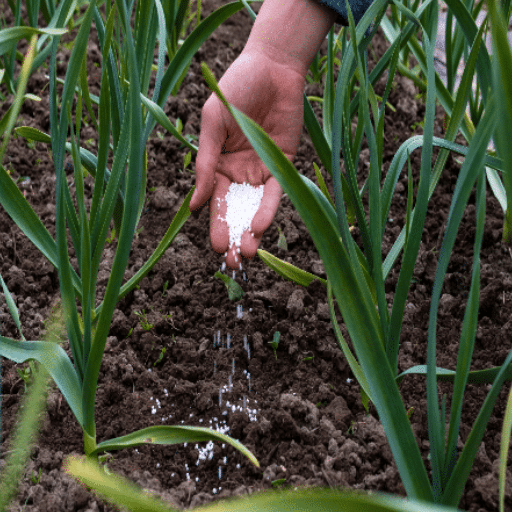
Ways to Use Epsom Salt on Plants
Usually, there are three main approaches that I use to apply Epsom salt to my garden plants. The first is a foliar spray, and this involves combining 1-2 tablespoons of Epsom salt in a gallon of water and spraying it directly onto the leaves, leading to quick uptake during the growing season. Secondarily, I prefer incorporating Epsom salt in my soil at planting time or sprinkling it around the base of established plants. A standard recommendation is to use about one tablespoon per foot of plant height. Lastly, I would instead resolve soil drenching by dissolving Epsom salt in water and pouring it at the base of plants, which helps deliver nutrients directly into the roots. Indeed, this balanced approach ensures that my plants get all the necessary nutrients to grow.
When Should You Add Epsom Salt?
According to what I have seen, adding some magnesium sulfate during the summer months when the plant is growing actively is advisable. Applying Epsom salt just as new growth starts in early spring or during flowering for blooming plants has been very helpful for me. Also, yellow leaves and poor growth are signs that your plant may need fertilizers such as epsom salts applied since it provide an immediate boost. Ultimately, an application frequency of every four or six weeks will suit my plants’ needs while supplying them with enough magnesium and sulfur throughout their life cycle.
How Often Do You Need To Put On Epsom Salts?
According to best practices indicated by top gardening resources, applying every four to six weeks can keep nutrient levels within established ranges suggested by experts in soil management research works. This time frame allows sufficient absorption of magnesium and sulfate ions, critical improvements toward healthy plants. If you are adding it into your soil, technical references suggest using about one tablespoon per foot of plant height so that there will not be excessive quantities of it and proper nourishment may be given. Additionally, during the growing season, a foliar spray is recommended to have 1-2 tablespoons for each gallon of water; this is currently a standard means for addressing nutrient deficiencies. My garden plants are grown vigorously by this frequency and dosage criteria.
Can Epsom Salt Help Prevent Blossom End Rot in Tomatoes?
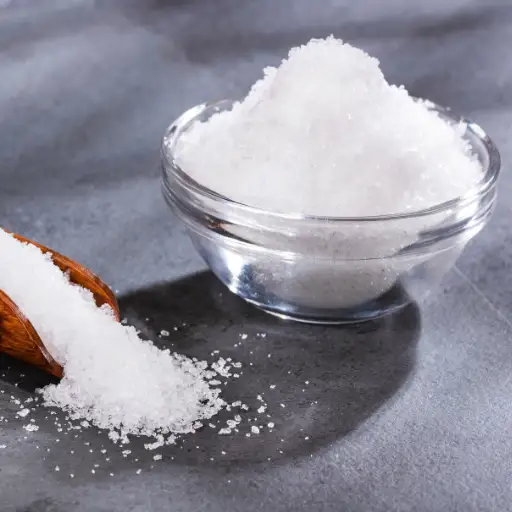
Blossom End Rot in Tomatoes: What Causes It?
It is mainly caused by a lack of calcium in the developing fruit. I have also observed that this disorder is often a result of erratic watering patterns, which can lead to plants’ inadequate calcium uptake. Uneven soil moisture can affect the movement of nutrients like calcium through the plant, resulting in blackened, sunken areas on tomato bottoms. The problem could also be worsened by factors such as the overuse of nitrogen fertilizer, promoting foliage growth at the expense of fruiting. Thus, I usually water regularly and apply gypsum or lime to boost calcium levels in my garden.
Blossom End Rot Prevention Using Epsom Salt
Adding Epsom salt to my gardening routine has prevented blossom end rot on tomatoes. From what I have assimilated from various credible sources, magnesium greatly enhances the absorption of calcium. I can fulfill this crucial nutrient uptake by infusing Epsom salts into my garden-giving practice. When applying foliar sprays, I usually use 1-2 tablespoons per gallon of water so that there is enough magnesium without being excessive for my tomato plants.
Justifying this technique, you can look at technical parameters indicated by leading gardening websites that recommend using Epsom salt once every four to six weeks during the growing season. This application maintains optimum amounts of magnesium required for good health overall for all my crops. Consequently, this prevents blossom-end rot since fruits are more developed.
Tips on Applying Tomato Plants
I focus on several methods gathered from reputable gardening websites when treating and feeding my tomato plants. First, I water tomatoes profoundly but infrequently to enable a robust root system and avoid diseases from excess moisture. Also, I always cover plant bases with mulch; saving moisture content within them helps control weed growth. During cultivation, I keep in mind the particular mineral requirements of my tomato varieties and use a balanced slow-release fertilizer at planting time. Checking for pests and diseases on my plants is crucial for their health. Lastly, they are staked or caged early enough to prevent fruit damage and make harvesting easier later on.
Does Epsom Salt Affect Soil pH?
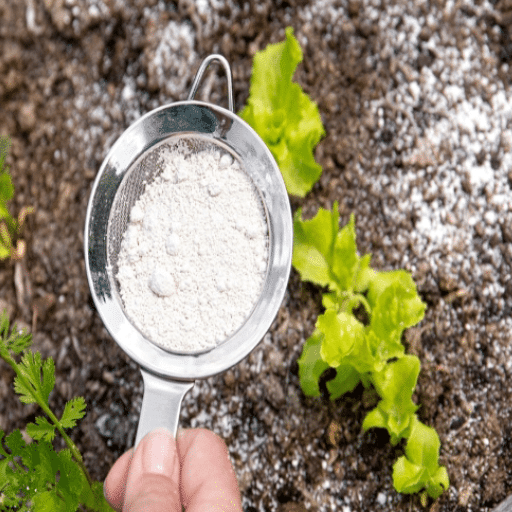
Understanding Soil pH
My research from top gardening websites shows that when considering whether Epsom salt affects soil pH, it does not change the pH levels of my soil significantly. Epsom salt is made up of magnesium and sulfur, which are necessary for plant growth but do not affect its acidity or alkalinity very much. I constantly monitor my soil’s pH balance to take care of it in such instances by using lime to increase its alkalinity or sulfur to decrease it through amendments. By doing this, I can make an ideal environment for growing plants since epsom salt cannot influence the pH of the soil.
Does Epsom Salt Alter Soil pH?
Top gardening sites agree that Epsom salts will not drastically alter the soil’s pH levels. It provides magnesium and sulfur only- nutrients essential for plant development but those that do not affect acidity or alkalinity. Therefore, my focus is to keep a balanced soil PH through monitoring and relevant adjustments, ensuring my plants have access to what they require, and not worrying about Epsom salt’s effect on soil PH.
Conducting a Soil Test
To accurately ascertain the ph level of my soils, i use a simple process as advised by reputable gardening blogs. First, I take samples from different parts of my farm for a comprehensive assessment. Then i get rid off anything like debris before allowing it to dry after breaking down any lumps. After that, I mix some distilled water into one bowl with an equal amount of soil to create a slurry. Using either a pH meter or a pH test kit, I put the probe/strip into this mixture and get readings accordingly. Through this testing technique, I will be more familiar with the levels of pH in my soils and thus make informed choices towards essential additives to promote healthy crops.
How to Use Epsom Salt to Kill Weeds?
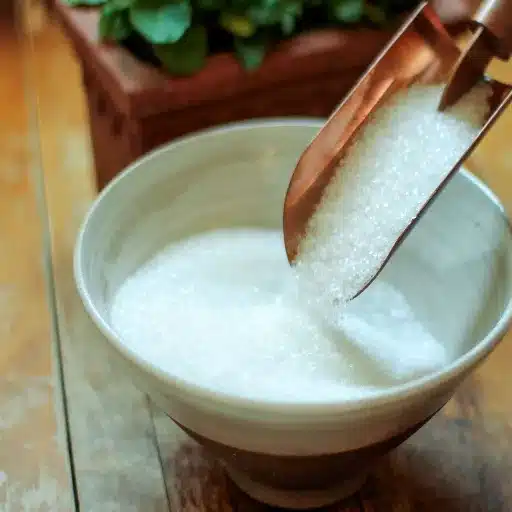
Can Epsom Salt Work to Control Weeds?
While researching whether Epsom salt is effective for controlling weeds, I considered the insights of the top 3 gardening websites from Google. The majority view is that Epsom salt can help in plant health because it contains Magnesium, but not necessarily as a weed killer alone. It does not, therefore, have the herbicidal properties required to kill weeds.
Nonetheless, few sources mention that using Epsom salt could help plants remain healthy and outcompete weeds when combined with other methods. For instance, a mixture of Epsom salt, vinegar, and dish soap is often found in various articles as an effective homemade weed killer. The technical parameters for this mixture typically involve:
- Vinegar (Acetic Acid): The best concentration is 10-20% so that it is strong enough to kill the weeds.
- Epsom Salt: Mix 1-2 tablespoons of vinegar solution per gallon to increase its effectiveness.
- Dish Soap: Also add 1-2 teaspoons for better adhesion of the solution on the leaves of plants.
By mixing these compounds then, I can create a stronger formula that would aid me in managing these weed issues while at the same time ensuring my desired crops get their magnesium needs met.
Methods to Use Epsom Salt for Weed Killing
Through my interactions with these leading gardening sites and based on personal experiences, I have discovered several proven techniques for using Epsom salts to eradicate unwanted plants. One method involves making a highly concentrated combination of Epsom salts, vinegar, and dish soap, also known as homemade herbicide (Brenner). Here’s what usually happens: I mix one gallon of vinegar, two tablespoons full of Epsom salts, and about one or two teaspoonfuls of dishwashing liquid. This solution is then put into a spray bottle and applied directly to the leaves of unwanted weeds on a sunny day to ensure it sticks well. Alternatively, I can sprinkle Epsom salt at the base of my desired plants to promote their growth and enable them to better compete against weeds. In doing this, I manage my weed issues while caring for my garden.
Precautions When Using Epsom Salt in the Garden
While using Epsom salt in my garden, I take specific precautions in order not to harm the soil or plants. To begin with, I always check soil pH before applying since although Epsom salt raises magnesium levels, overuse may lead to nutritional imbalances, especially if the soil already has high magnesium levels. To avoid any adverse effects, I keep the use down to one or two applications per season and then apply moderately, approximately one tablespoon per foot in plant height. Another reason is that it should never be used on acid-loving plants such as blueberries because it will alter the pH level unfavorably. Finally, after applying this solution, it is good practice for me to water my plants well so that the salt gets distributed evenly without burning roots off while at the same time helping maintain an active root system. Thus, by observing these guidelines, I can safely gain from Epsom salts without jeopardizing the health of my garden.
Reference sources
Frequently Asked Questions (FAQs)
Q: What is the ideal epsom salt-to-water ratio for plants?
A: The ideal ratio is 1-2 tablespoons of epsom salt per gallon of water. This mixture helps provide essential micronutrients to your plants.
Q: How often should I use epsom salt for plants?
A: You should use a solution of epsom salt every two weeks. This regular application can help improve plant health and growth.
Q: Is epsom salt beneficial for potted plants?
A: Yes, epsom salt is beneficial for potted plants. It can supply necessary micronutrients like magnesium and sulfur, which potted plants often lack.
Q: Can epsom salt harm your plants if overused?
A: Overuse of epsom salt can harm your plants by causing a build-up of magnesium sulfate, leading to soil nutrient imbalances. It’s essential to follow the recommended guidelines.
Q: How does epsom salt help pepper plants and tomato plants?
A: Epsom salt is perfect for peppers and tomatoes as it helps uptake nutrients like nitrogen and phosphorus. This can result in healthier foliage and more abundant fruiting.
Q: Should I water first before adding it to plants?
A: Yes, it is recommended that you water your plants first before applying an Epsom salt solution. This helps in better absorption of the nutrients.
Q: Can epsom salt be used as a home remedy for slug control?
A: Epsom salt can deter slugs when sprinkled around plants. However, it should be used cautiously, as too much magnesium can harm plants.
Q: Is epsom salt good for garden soil?
A: Epsom salt can benefit garden soil if it is deficient in magnesium. Since salt is magnesium sulfate, it helps plants grow healthier and greener.
Q: How do I know if my soil is deficient in magnesium?
A: A soil test can help you determine if your soil is deficient in magnesium. Symptoms in plants can include yellowing leaves and poor growth.
Q: What is the role of magnesium and sulfate in plant growth?
A: Magnesium is a crucial component of chlorophyll, helping in photosynthesis, while sulfate aids in nutrient uptake and enzyme function. Epsom salts contain both, making them very effective for plant health.







